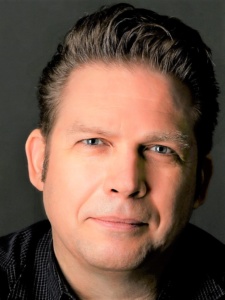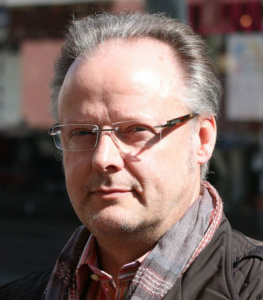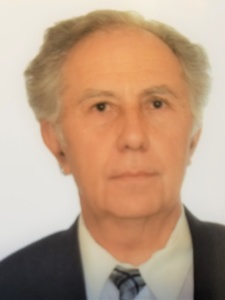Presentations slides, including those of most workshops, available here
Workshops (excl. sponsors’ events)
| This page represents the abstracts of workshops provided by moderators as at approx 2 weeks prior to the conference. For final titles (and slides) of all presentations, use the link above. |
David Benotmane (Glossa Group GmbH) David Benotmane
David Benotmane is Solutions Architect & Product Director at Glossa Group GmbH, a language service provider specialized in linguistic quality assurance. He is also co-organiser of the annual linguistic symposium in Zurich, Switzerland. He reorganised the translation services and implemented a fully automated translation management system with specific customized functions and various connectors to subsystems such as CMS, ERP, MRM, PIM, CRM… He joined Glossa Group in 2015. In the first years, he initially worked as a workflow and CAT Tool specialist, but also worked on the development of myproof – among many other activities that a very rapidly growing company required. |
Translation Quality Assurance - a risk avoidance approach This will be a short introduction to the author’s workshop, Linguistic Quality Assurance (LQA) and Translation Quality Assessment (TQA). Up to now, quality measurement on language translation has largely been subjective, if such measurement was undertaken at all. If an company did set up a quality process with its translation suppliers, the quality of translated service information would generally be reviewed by in-country validators designated by the company. The main goals of the translation of technical documentation are regulatory compliance and to minimize risks with regard to product liability and product safety. In order to cover different risks, risk-appropriate processes in translation project management are needed. ISO 17100, however, requires adherence to one single standard process and does not include risk aspects. In our model and system “myproof”, the core processes of risk management according to ISO 31000 are applied to processes in translation projects. The main element of the model is a risk matrix which allows a risk analysis of the texts to be translated and consequently the development of risk-based processes for translation projects. The implementation of comprehensive risk management for translations will result in regulatory compliance as well as a higher quality of translations with the corresponding quality level. For more on this, please attend the author’s workshop. |
Jerzy Czopik Jerzy Czopik
Born in Cracow, where he studied mechanical engineering until moving to Germany in 1986. Living in Dortmund from then he finished his engineering studies in Germany. In 1990 he started to translate, to begin his specialization in technical translation in 1991. Since 1992 sworn translator and interpreter for German and Polish. Since many years he uses CAT tools. Self-taught user, who in due course became a trainer for SDL software. Beside this he runs a webinar series called “Ask Dr. Studio” for the BDÜ (the German federal association of translators and interpreters). Since April 2018 he is vice-president of the BDÜ. Additionally, Jerzy is also auditor for LICS (Language Industry Certification System, awarding ISO 17100 certificates). Since 2010 together with his wife he owns an EN 15038 / ISO 17100 certificate. |
REGEX - is it a kind of magic? Who does not know that: a document with dozens of numbers is translated in a CAT tool, but the numbers are not transferred to correct target format. Or you have measurement units and numbers in your document, but your tool is not inserting a non-breaking space the unit and the number. Or you just want to change the order of certain words… All this can be done using regular expressions. |
Michael Farrell (Traduzioni inglese) Michael Farrell
Michael Farrell is an untenured lecturer in post-editing, machine translation, and computer tools for translators at the International University of Languages and Media (IULM), Milan, Italy, the developer of the terminology search tool IntelliWebSearch, a qualified member of the Italian Association of Translators and Interpreters (AITI), and member of the Mediterranean Editors and Translators association. Besides this, he is also a freelance translator and transcreator. Over the years, he has acquired experience in the cultural tourism field and in transcreating advertising copy and press releases, chiefly for the promotion of technology products. Being a keen amateur cook, he also translates texts on Italian cuisine. |
Raw Output Evaluator, a Freeware Tool for Manually Assessing Raw Outputs from Different Machine Translation Engines Raw Output Evaluator is a freeware tool, which runs under Microsoft Windows. It allows quality evaluators to compare and manually assess raw outputs from different machine translation engines. The outputs may be assessed both in absolute terms, using standard industry metrics or ones designed specifically by the evaluators themselves, and in comparison to each other and to other translations of the same input source text. The errors found may be highlighted using various colours. Thanks to a built-in timer, the same program can also be used as a simple post-editing tool in order to compare the time required to post-edit MT output with how long it takes to produce an unaided human translation of the same input text. The MT outputs may be imported into the tool in a variety of formats, or pasted in from the PC Clipboard. The project files created by the tool may also be exported and re-imported in several file formats. Raw Output Evaluator was developed for use during a postgraduate course module on the use of machine translation and post-editing, which is part of the Master’s Degree in Specialist Translation and Conference Interpreting at the International University of Languages and Media (IULM), Milan, Italy. |
Lourdes de la Torre Salceda (Interpreters' Help) Lourdes de la Torre Salceda
Lourdes de la Torre Salceda, born in Santander (Spain), is a professional conference interpreter and localizer. She joined Interpreters’ Help after creating Cleopatra, the first smartphone app developed for consecutive interpreting professionals. In 2017, she graduated from the Pontifical University Comillas, Madrid, earning an Official Master’s Degree in Conference Interpreting. This MA is awarded by the EMCI (European Master in Conference Interpreting) Consortium in collaboration with the DG-SCIC of the European Commission and the DG-INTE of the European Parliament. During her second MA Thesis, she was conducted by Lola Rodríguez Melchor, at Pontifical University Comillas, and her research focused on the academic frame of Cleopatra: the app for interpreters to automate their own symbols for consecutive interpreting note-taking. |
Getting Started with ''Interpreters’ Help'' Interpreters’ Help offers a detailed workshop for interpreters’ willing to get started in this Computer-Assisted-Interpretation Tool. It will be diveded into two parts. The first part consists of a Master Class where the four main features of the platform will be patiently explained (My Glossaries, My Business, Network and Glossary Farm). In the second part, Interpreters’ Help will give a short speech intended to be interpreted in consecutive mode. Before giving the speech, documentation will be provided for interpreters to prepare with Interpreters’ Help tool. If the participants need assistance, the Workshop moderator will help them. Once the interpreter finishes their preparation, a volunteer interpreter will provide consecutive interpretation. The speech will be given in Spanish and it will be interpreted into one or several languages (depending on time and attendees). The main goal of the first part of the workshop is to teach interpreters how to use this new CAI-Tool. The goal of the second part of the workshop is to show volunteer interpreters how to prepare successfully thanks to Interpreters’ Help. The general goal of Interpreters’ Help is to make its modest contribution to the community of interpreters and to make the tool known. |
Alan Melby (FIT, LTAC) Alan K. Melby
Alan K. Melby is a certified French-to-English translator. Has three additional titles as of July 2018: Since 1980, he has added work on several translation-related standards, including TBX (www.tbxinfo.net). Since the 1990s, his interests have expanded to include evaluating/assessing translation quality. |
Implementing TBX version 3 The first version of of TBX (TermBase eXchange) was published by the now defunct LISA (Localization Industry Standards Association). The second version was co-published in 2018 by LISA and ISO (www.iso.org). Since 2008, the TBX Steering Committee has gathered feedback from language industry regarding the strengths and weaknesses of TBX version 2 and has been working diligently on TBX version 3, which should be close to being in final form by November 2018. Version 3 will be divided into an ISO standard (30042) which is an update of the 2008 version and industry implementations, such as those on the TBXinfo website (www.tbxinfo.net). This workshop will begin with a brief description of the biggest problem reported with TBX version 2 (unintended excessive looseness) and how version 3 attempts to address this problem by requiring an explicit dialect designation in every TBX instance. Then the workshop will become highly interactive as workshop leader addresses specific questions about TBX, especially those related to implementation of TBX V3 for termbase archival, exchange, and new development. |





